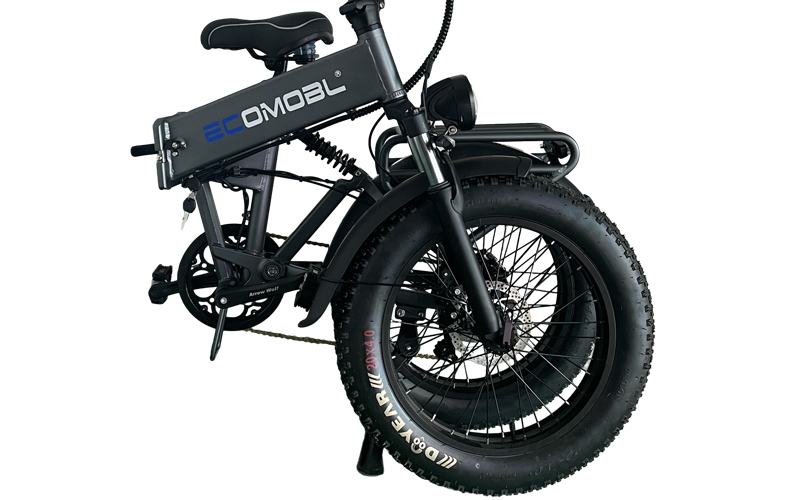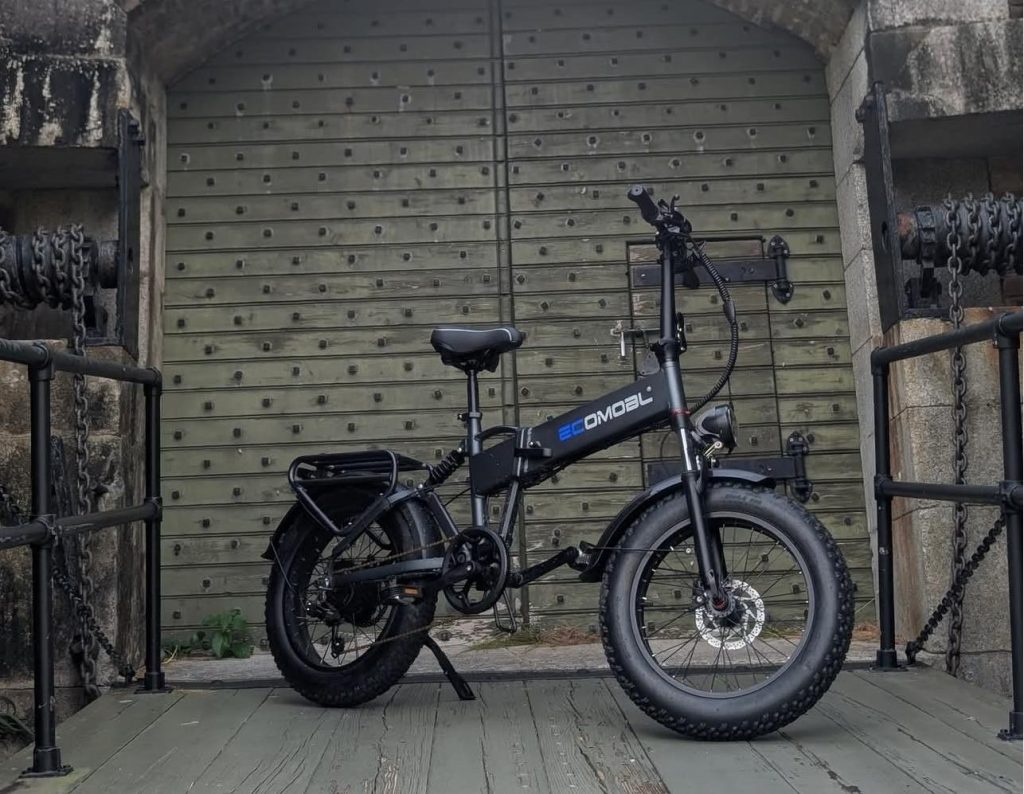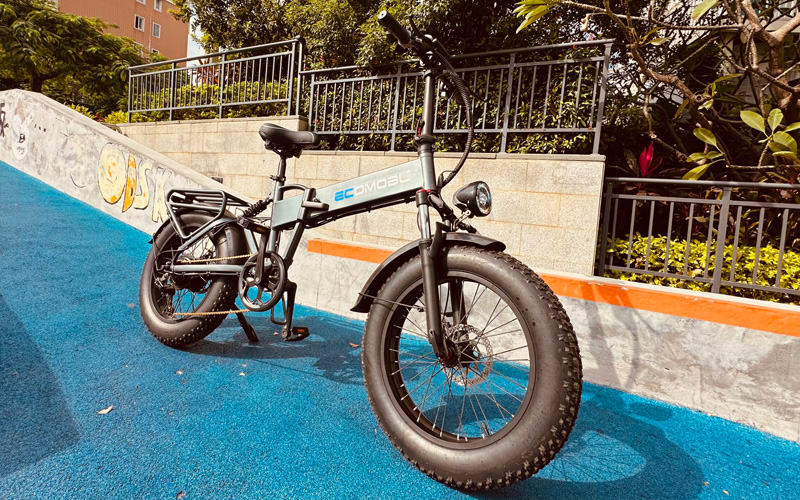Cities are getting busier. Homes are getting smaller. People need better ways to move around. A foldable electric bike helps with that. It takes up little space but still rides like a real bike. You can fold it, store it, and ride it again without much effort. Many adults now use them for work, shopping, and travel.
But why are foldable electric bikes so useful? What makes them more than just a clever idea? This guide explains how these bikes work and who they help most.
Defining the Foldable eBike: What Sets Them Apart and Key Advantages?
A foldable electric bike is an eBike that you can fold into a smaller shape. You can carry it more easily and store it in small spaces. People who live in small homes or ride trains often choose foldable bikes.
These bikes work like normal electric bikes. You can still ride with motor help, go up hills, or travel across town. But when you need to put the bike away, you can fold it at the middle or at the handlebars.
Some models have fat tires, strong motors, and good batteries. That means you can ride them on more kinds of roads, not just smooth streets. Even when folded, the bike still gives you power and balance.
Why Do People Choose Foldable Electric Bikes?
- Fits in closets, cars, or under desks
- Good for commuting or short trips
- Can ride on pavement, grass, or light trails
- Saves space at home or work
| Feature | Normal Electric Bike | Foldable Electric Bike |
| Storage Space | Needs a garage or hallway | Fits under desks or in closets |
| Carrying and Lifting | Heavy and bulky | Easier to carry when folded |
| Public Transport Friendly | Often not allowed on trains | Allowed on most trains when folded |
| Urban Living | Hard to store in small apartments | Fits better in tight living spaces |
| Multi-Mode Travel | Not easy to mix with the bus/train | Easy to take on train or car trips |
| Parking Safety | Must lock outdoors | Can bring inside buildings |
A foldable eBike gives freedom to move without needing a big garage or parking spot.

Just How Heavy Are Folding Electric Bikes and Does It Matter?
Weight is one of the most important things to check when buying a foldable electric bike. These bikes are made to fold, but they still have motors and batteries. So they are not as light as normal bikes without motors.
Most folding eBikes weigh between 40 and 70 pounds (about 18 to 32 kilograms). Some very light models weigh under 40 pounds, but they may have weaker motors or small batteries. Heavier models are stronger and go farther, but they are harder to carry.
What Makes a Folding Electric Bike Heavy?
- Motor size: A 750W motor adds more weight than a 250W one. Bigger motors help you climb hills and carry more weight.
- Battery size: A 48V 10Ah battery gives better range but also adds a few pounds.
- Tire type: Fat tires (like 20×4 inches) are great for bumpy roads, but weigh more than slim tires.
- Frame material: Most folding eBikes use aluminum. It is stronger and lighter than steel. Some cheaper bikes use steel, which is heavier.
You also need to think about how you will move the bike when it’s not being ridden.
Real examples:
- If you live in a walk-up apartment (no elevator), a 60-pound bike may be hard to carry every day.
- If you take the subway, a bike under 50 pounds is easier to lift on and off the train.
- If you drive to the park and ride from there, check if your car trunk fits a folded bike.
So does the weight matter? Yes.
- Too heavy: Hard to carry, but more stable when riding.
- Too light: Easy to lift, but may feel shaky or underpowered.
- Medium weight: Best for a balance between riding strength and portability.
Before you buy, ask yourself:
- Can I carry the bike without help?
- Will I need to lift it often?
- Is power more important than light weight for me?
The right weight depends on your body, your storage, and how you plan to ride.
Beyond Portability: Common Disadvantages and Trade-offs of Folding eBikes

Foldable bikes are smart for storage, but they have limits. Folding joints can feel a bit loose on rough roads. That does not mean the bike is unsafe. But it may not ride as smoothly as a full-size model.
Battery size is another issue. Smaller bikes often have smaller batteries. That means less range. Some bikes also have smaller wheels, which can feel bumpy on broken roads.
Folding parts need care. Hinges and locks must work well. If not, the bike may shake or wear out faster.
What to Keep in Mind:
- May need more frequent charging
- Can feel less stable at high speed
- Extra parts need more care
Folding bikes still work great if you know what trade-offs matter to you.
Can You Ride Long Distance and Are They Road-Legal?
Long-Distance Riding Capabilities
Modern folding electric bikes can cover significant distances on a single charge, depending on battery capacity, motor efficiency, terrain, and rider weight. For example, the Fiido L3 features a 1113.6Wh removable battery, offering up to 124 miles of range under optimal conditions (source: fiido.com). Similarly, the G-FORCE T7, with its 2880Wh battery, boasts a range of up to 130 miles (source: g-forcebike.com).
These ranges are achievable under specific conditions, such as flat terrain and moderate speeds. Real-world usage may yield lower ranges due to factors like hills, wind resistance, and frequent stops.
Road Legality in the U.S.
In the United States, electric bikes are generally classified into three categories:
- Class 1: Pedal-assist only, with no throttle, and a maximum assisted speed of 20 mph.
- Class 2: Equipped with a throttle, allowing for motor-powered riding without pedaling, also capped at 20 mph.
- Class 3: Pedal-assist only, with a maximum assisted speed of 28 mph, and often equipped with a speedometer.
Most folding electric bikes fall into Class 1 or Class 2, making them legal for use on roads and bike lanes in many states. However, regulations can vary by state and locality. For instance, some areas may restrict Class 3 e-bikes from certain bike paths or require helmets for riders under a specific age (source: peopleforbikes.org).
Key Considerations for Road Use
- Speed Limits: Ensure your e-bike complies with local speed regulations.
- Motor Power: Federal guidelines limit e-bike motors to 750W, but some states may have different standards.
- Safety Equipment: Front and rear lights, reflectors, and a bell or horn may be required for road use.
- Helmet Laws: Helmet requirements vary; some states mandate them for all riders, while others focus on age-specific rules.
Before riding, it’s advisable to check your state’s specific e-bike laws to ensure compliance.
Navigating Regulations & Travel: Using Your Folding eBike on Trains and Planes

Foldable electric bikes are useful for people who travel. You can carry them onto trains. Some airlines may let you take them, too—but there are rules.
Taking Folding eBikes on U.S. Trains
Most U.S. train systems allow folding bikes. For example:
- Amtrak lets you bring a folding bike if it folds smaller than 34″ x 15″ x 48″. You must keep it folded when on board and store it in the luggage area.
- New York’s MTA, Chicago’s CTA, and San Francisco’s BART also allow folding bikes, even during busy hours—as long as they are fully folded.
Important tips:
- Keep the wheels clean.
- Use a cover or strap if the train requires it.
- Never block walkways or doors.
These rules help you use your bike on trains without extra charges or problems.
Flying with a Folding eBike in the U.S.
Air travel is harder. The big issue is the battery. Most airlines follow FAA rules, which say:
- You cannot take lithium batteries over 160Wh in carry-on or checked bags.
- Most folding eBike batteries are above 300Wh, so they can’t fly with you.
What you can do:
- Ship the battery separately using ground shipping (like UPS or FedEx Ground).
- Take only the bike frame (without the battery) as checked baggage.
- Ask the airline about sports equipment rules. Some airlines allow bikes if packed in special bags or boxes.
Before flying:
- Check airline rules for lithium batteries.
- Pack the bike carefully.
- Label parts if you ship the battery.
Summary for Travel
| Travel Type | Allowed? | What to Watch For |
| Subway / City Trains | Yes (folded) | Must stay folded, clean, and out of the way |
| Long-distance Trains (Amtrak) | Yes | Size limit: 34″ x 15″ x 48″ |
| Air Travel | Frame: Yes
Battery: No (if >160Wh) |
Ship battery, follow airline bike rules |
With smart planning, your folding eBike can go with you on most U.S. trips. But always check the latest rules from airlines and train lines before you travel.
What to Look For When Choosing the Best Foldable Electric Bike

Not all foldable electric bikes work the same way. Some fold fast but feel shaky. Some ride smoothly but are harder to carry. The best bike for you depends on how far you ride, what kind of roads you use, and where you need to store the bike.
Small tires feel quick but bounce more. Fat tires ride smoother, especially on gravel or grass. A strong motor helps on hills and when carrying bags. A good battery lets you ride longer without stopping. You also want safe brakes, lights, and an easy-to-read display.
What to look for:
- Wheel size: 20-inch or fat tires for better comfort
- Motor: At least 500W if you ride up hills
- Frame: Foldable, but strong enough for daily use
- Brakes and lights: Needed for safety in traffic or at night
One of the best fat tire electric bike options for adults is the Ecomobl BT-20. It’s built for adults who want power and comfort in a folding design. With 4-inch wide fat tires, you can ride over grass, gravel, or city bumps without shaking. The 750W motor helps you go uphill or carry groceries with ease. The Samsung 48V 10Ah battery gives you up to 50 miles, so you don’t need to stop and charge all the time.
You also get dual disc brakes for safe stops and IP67 waterproofing, so you can ride in light rain. The bright headlights and taillights help you stay seen at night. And because it folds, you can store it at home or in your car trunk with no hassle.
Final Thoughts
A good foldable electric bike doesn’t just disappear when you’re done riding; it fits into your day without getting in the way. That’s what makes it different. It works for people who live upstairs, ride trains, or just don’t want a bulky machine to manage.
Models like the Ecomobl BT-20 prove that compact bikes don’t need to feel limited. You get real power for steep roads, real comfort for uneven paths, and real distance without thinking twice about the battery. All in a frame that folds down when you’re done.
For riders who value space, movement, and control without trade-offs, this kind of bike isn’t a compromise. It’s a better way to ride.
Bonus Tip:
If you’re looking for an electric bike fat tire model that folds, climbs hills, and rides smoothly on rough paths, focus on options with wide 20-inch tires and strong motor support. They offer better balance and grip, especially for adults riding beyond city streets.
More Questions About Folding Electric Bikes
Can I store a foldable eBike in my car trunk?
Yes, most foldable electric bikes fit in standard car trunks—especially sedans, hatchbacks, and SUVs.
Before buying, check the bike’s folded size. For example, many models fold down to about 58″ x 12″ x 34″, which fits easily in most midsize cars. Just remove any loose parts (like baskets) and lay the bike flat to avoid damage. If your trunk is small, you can fold one seat down to make extra space.
How long does it take to charge a folding electric bike?
A 48V 10Ah battery like the one in the Ecomobl BT-20 usually takes about 5 hours with a standard home outlet. Some fast chargers can shorten this time, but it’s always best to follow the brand’s charging guide to protect battery life.
Are foldable electric bikes good for daily commuting?
Yes, foldable electric bikes are a strong choice for daily commuting, especially in cities. You can ride to work, fold the bike, and store it under your desk or in a closet.
What’s the lifespan of a foldable electric bike?
A well-made foldable electric bike can last 3 to 5 years or more, depending on how you use and care for it. The battery usually lasts 500 to 800 charge cycles, which means several years of regular use.




